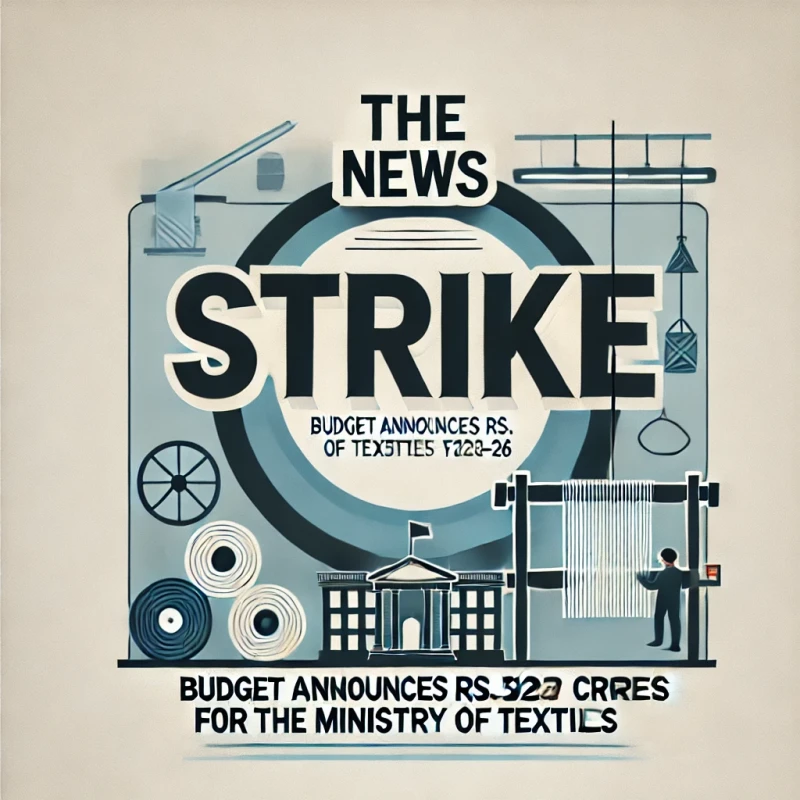The world has changed dramatically since the pandemic. COVID-19, followed by the Russia–Ukraine conflict and shipping route disruptions, forced countries and companies to rethink how and where their goods are made. The old idea of efficiency above all else has given way to a new reality — resilience. Businesses now seek not just low-cost production but reliable partners who can deliver even when the world is in turmoil. This shift has created a once-in-a-generation opportunity for India.
With its young population, improving infrastructure, and growing industrial base, India is emerging as a credible alternative to China in global supply chains. The IMF recently raised India’s growth forecast to 6.6%, and foreign exchange reserves are close to $700 billion, signaling economic stability. Add to this the “China + 1” strategy being adopted by global firms, and the picture is clear: India’s manufacturing sector can become the next global pivot — if it strengthens its trade and supply chain architecture through smart Free Trade Agreements (FTAs) and domestic reforms.
The Challenges to Overcome
Yet, opportunity alone does not guarantee success. India still faces several structural challenges that limit its manufacturing potential. Critical inputs — such as active pharmaceutical ingredients (APIs) — remain heavily dependent on imports from China, creating vulnerabilities. Infrastructure gaps persist: ports are congested, logistics costs remain high, and only a small portion of freight moves on dedicated high-speed corridors. The World Bank’s Logistics Performance Index still ranks India at 38th, far behind export giants.
While the Production Linked Incentive (PLI) schemes have attracted over ₹1.76 lakh crore in investments and boosted production to ₹16.5 lakh crore, the disbursement of incentives has been slower than expected, with just over ₹21,500 crore released so far. This has delayed export competitiveness gains. Moreover, many MSMEs — which form the backbone of manufacturing — still lack access to affordable credit and digital supply chain tools. The World Economic Forum has warned that smaller firms “lack the capital, visibility, and resilience” to manage systemic disruptions.
These constraints mean that India’s progress as a manufacturing hub must go hand-in-hand with reforms in logistics, trade facilitation, and workforce readiness. Without tackling these gaps, FTAs alone cannot deliver the full benefits of global integration.
Using FTAs to Redraw Supply Chains
Recent and upcoming trade agreements are reshaping how India connects to the world. The India–UK FTA, once finalized, will eliminate tariffs on 99% of Indian exports, covering textiles, marine products, auto components, and chemicals. Analysts estimate this deal could create over one million jobs in five years by boosting labor-intensive sectors. Equally important are the provisions that open services and talent mobility — allowing Indian professionals in IT, finance, and engineering to work more freely in the UK.
Similar gains are visible in FTAs with Australia, UAE, and EFTA countries. These deals go beyond tariff cuts; they are instruments for supply chain reconfiguration, enabling India to plug into stable, rule-based markets. For exporters, this means lower costs, predictable access, and shared technology. For investors, it means reduced geopolitical risk and a broader base of sourcing partners.
The PLI–FTA Partnership
India’s PLI schemes and FTAs can together form the twin pillars of a stronger manufacturing ecosystem. The PLI incentives have already helped sectors like electronics, pharma, and automotive scale up rapidly. Electronics output, for instance, rose 146% in FY 2024–25 to ₹5.25 lakh crore. But these goods need global markets — and that’s where FTAs step in.
By securing duty-free entry in key destinations, FTAs can create new export lifelines for PLI-backed products. In turn, PLI can help Indian manufacturers meet the quality and scale demanded by FTA partners. However, delays in project implementation and slow fund releases risk weakening the synergy. Policymakers must now align PLI disbursements and FTA rollouts, ensuring that domestic capacity expansion matches international market openings.
Sectoral Opportunities:
Textiles and Apparel: With tariffs to the UK and EU coming down, Indian apparel can regain competitiveness against Bangladesh and Turkey. Textile exports already touched nearly $6 billion in FY 2025. Setting up dedicated FTA-linked textile clusters near ports can cut lead times and strengthen traceability — a growing demand from European buyers.
Pharmaceuticals: India has turned its API trade deficit into a small surplus, thanks to PLI support. By creating Binary Export Zones — industrial parks with joint India–EU certification and assured export contracts — India can become a dependable supplier to regulated markets, reducing dependence on Chinese intermediates.
Automotive and EV Components: The auto PLI has attracted over ₹67,000 crore in investments. India and the UK could establish Innovation Corridors — shared R&D hubs in India that co-develop EV batteries, software, and lightweight materials. These corridors would blend British technology with Indian manufacturing scale.
Agri and Marine Exports: Food and seafood exporters could benefit from Cold Corridor Partnerships with FTA countries, using dedicated refrigerated freight to Europe or the Gulf. Specialized cold-chain parks at coastal logistics hubs can make this trade both profitable and reliable.
Strengthening the Infrastructure Backbone
No trade policy succeeds without strong logistics. India must move from fragmented transport networks to an integrated system that supports just-in-time manufacturing. The National Logistics Policy and the Unified Logistics Interface Platform (ULIP) have already created digital foundations — processing over 160 crore transactions and tracking millions of EXIM containers in real time.
The next step is to develop FTA-Cluster Multi-Modal Logistics Parks — industrial hubs near ports and freight corridors that serve specific trade partners. Each cluster could offer customs, warehousing, and digital tracking under one roof, reducing transaction costs for exporters.
Additionally, a dedicated Export Green Corridor — a high-priority freight route for time-sensitive shipments — could connect inland manufacturing zones directly to ports. Paired with expanded cold-chain facilities and multi-modal connectivity, this would significantly reduce spoilage and delivery times for perishable and high-value goods.
Digital and Financial Resilience
To future-proof supply chains, India needs visibility and financial strength. Establishing a National Supply Chain Monitoring Center could use AI and blockchain to track critical goods, forecast disruptions, and recommend alternate sourcing routes. With India’s growing digital ecosystem and logistics data, such a system can serve as an early-warning network for both industry and government.
On the financing side, introducing Resilience Bonds could give exporters and manufacturers easier access to capital for diversification. These bonds would pool funds from banks and investors to support firms building alternate supplier bases or new export lines linked to FTAs.
Another innovation could be Mutual Recognition Protocols with key trade partners. By harmonizing technical standards for products like auto parts and chemicals, Indian goods could enter foreign markets with minimal re-testing, saving time and cost. Finally, Advance Purchase Agreements could ensure that strategic sectors such as EV batteries and pharmaceuticals have guaranteed domestic offtake if global demand dips — maintaining stability for investors.
Looking Ahead
Commerce Minister Piyush Goyal has repeatedly stressed that India must regularly assess and strengthen its supply chains to stay competitive. His message captures the central truth: FTAs are valuable enablers, but domestic competitiveness is the foundation. India’s long-term success depends on building depth — in skills, infrastructure, R&D, and digital systems — so that every trade agreement amplifies rather than substitutes internal capability.
If India can combine smart trade policy with strong domestic execution, it will not only diversify global supply chains but also lead them. In a world searching for reliability, India can become the manufacturing partner the world trusts — resilient, scalable, and ready for disruption.
Authored by Suketu Thanawala and Anamika Singh, StraCon Business Advisory Services.


